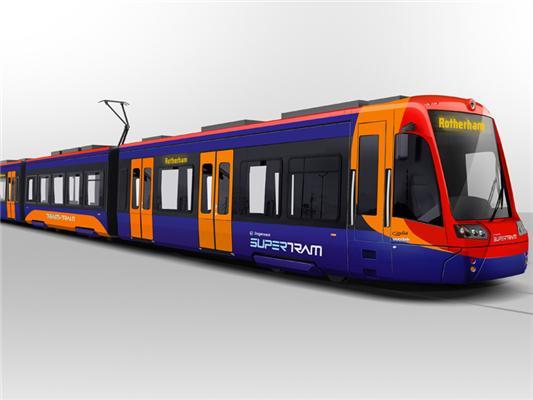Citizens Taking Action
for advancment of
public transit and passenger trains
Rail Researchers Work On UK's First Tram-Train Scheme
Oct. 1, 2013 — Under contract by Network Rail, a team of engineers at the University of Huddersfield's Institute of Railway Research (IRR) has been developing solutions for the problematic interface between a Tram-Train vehicle and two very different railway infrastructures.
The Tram-Train concept allows a railway vehicle to run in two operational modes; as an on-street tram serving city centres but also as a commuter train running on existing local rail network. This dual operation concept provides great flexibility and efficient use of railway infrastructure and connections.
Tram-Train first became popular in Germany and is now spreading rapidly through Europe.
The Sheffield-Rotherham Tram-Train scheme represents the UK's first trial of the concept and has provided the project partners, the Department for Transport, Network Rail (NR), Northern Rail, Stagecoach Supertram (SST) and South Yorkshire Passenger Transport Executive with many challenges, as Dr Paul Allen, Assistant Director of the IRR and project manager, explains: "One of these challenges is the wheel-rail interface, key to the vehicles' safe operation and a major driver for the ongoing life-cycle maintenance costs of the system."
By applying advanced computer modelling techniques, the team at the IRR has been able to predict vehicle dynamic behaviour on both the tight radius curves (<25m) of embedded city centre track and also the higher speed but less curvaceous sections on Network Rail mainline.
"These differing conditions require an interface design which maintains vehicle dynamic stability on straight track, whilst allowing adequate curving performance and derailment resistance in the city centre -- a classic engineering compromise in railway vehicle dynamics,"said Dr Allen.
David Crosbee is one of the Senior Research Fellows in the IRR and has been working with Paul Allen on the Tram-Train project: "The wheel design work was complicated by the very different rail head shapes of the two systems; the SST network having a very flat rail head profile, whilst the worn NR rail sections typically have a much smaller effective rail head shape. This necessitated compromise in the wheel and tread design with significant simulation work being carried out to optimise the new wheel profile shape. This allowed wheel-rail contact stress and wear rates to be minimised on both systems, whilst also maintaining safety against derailment."
The wheel profile was also required to operate under differing wheelset geometry conditions. This required a special stepped-wheel flangeback to maintain safe passage through both NR and SST switches and crossings and checked curves.
The new profile will now be subject to scrutiny by the SST project team and the Rail Safety and Standards Board (RSSB). Once the new wheel profile is approved for running on the mainline, tram test running can begin in earnest.
"The Tram-Train concept allows a railway vehicle to run in two operational modes; as an on-street tram serving city centres but also as a commuter train running on existing local rail network."
One Seat
Ride vs.
BRT Bus

